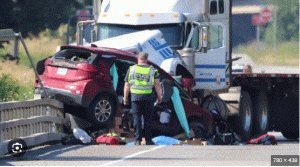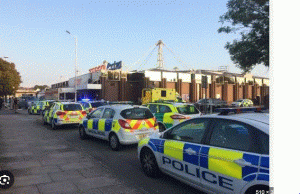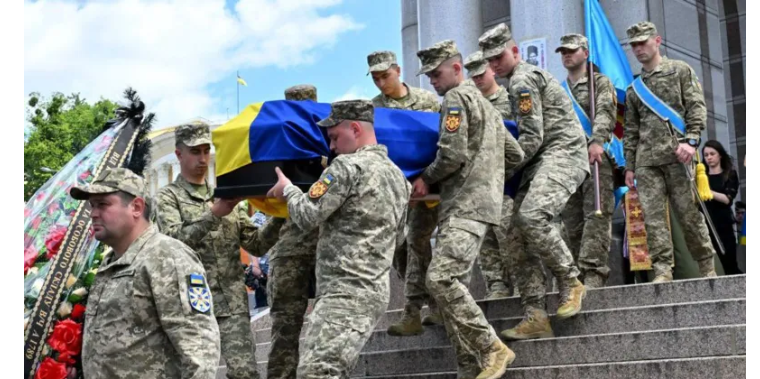
Six RAF Eurofighter Typhoons are parked on the taxiway, with two of their engines roaring, while the ground crew works quickly to make final preparations for takeoff.
A cloud of dust rises in the summertime haze in the distance, covering the second runway’s building site, which is 3.5 km (2 miles) long and next to the first. Both the old and new hangars are battered by the intense northerly wind.
The next village, which bears the name of a liberal leader from the 19th century, is whence the Mihai Kogalniceanu (MK) airfield gets its name.
Currently, it serves as the peculiar backdrop for what is rapidly becoming to become the largest NATO facility in Europe—bigger than Ramstein in Germany.
Putin, the president of Russia, used NATO’s encroachment on Russia’s European flank as justification for his conflict in Ukraine. On the NATO chessboard, more pieces have advanced in reaction to his invasion.
Soon, the MK facility will house a squadron of Romanian F-16s that were just acquired from Norway, together with MQ-9 Reaper drones and a military city that will serve as a rotating hub for 32 different nations’ military, air force, and naval personnel.
The Finns are the newest arrivals. As the fighter flies, the facility is 400 kilometres from Sevastopol in Russian-occupied Crimea and only 20 km (12 miles) from the Black Sea shore.
Flt Lt Charlie Tagg, an RAF pilot, is on his third and last tour of duty here.
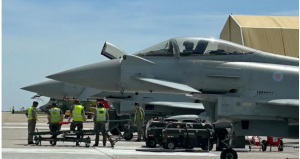
The US is much more present here, with more infrastructure, lodging, personnel, and equipment.
He claims that the invasion of Ukraine by Russia has altered the mission’s strategic posture as well as the locations he flies over. During his final tour in 2021, NATO fighter pilots crossed international seas in the Black Sea at great altitude. However, they now stay within the 12 nautical mile limit above the territorial waters of Bulgaria and Romania to avoid misunderstandings, escalating situations with the Russians.
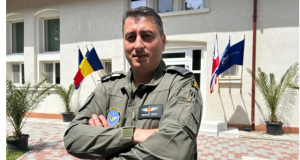
Our previous purpose in being here was to prevent any Russian aggression. These days, it serves more as a guarantee to other NATO members, like Romania, that we are present and prepared to defend.
He claims that although there had been calls on earlier missions to intercept a Russian plane over the Baltic, none had been made since his arrival.
They have the right to proceed as they like and won’t be breaking any international laws by blundering through. However, we will position an aircraft near to that enemy aircraft. It demonstrates to the Russians that we are engaged from a posturing perspective. It definitely sends a message that we are travelling with armed jets.
Additionally, it gives us useful intelligence since we can track aircraft serial numbers and the armaments they are carrying, which adds to our overall intelligence picture.
He monitors the battle in adjacent Ukraine on his radar screens late at night when he is at the British compound on the MK facility.
Drones belonging to Shahed were visible entering Odesa. Heat sources near the impact point of the weaponry on the ground are linked to radar feeds that track both friendly and unfriendly aircraft. Thus, it seems really strange.
Although NATO aircraft steer clear of needless conflicts with Russia, there have been two documented instances in the Black Sea. In September 2022, a Russian pilot nearly shot down a British intelligence-gathering aircraft carrying up to 30 people after misinterpreting a ground control order.
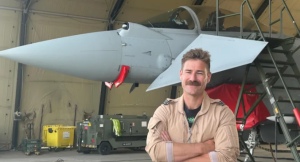
A Russian SU-27 “Flanker” fighter purposefully took down an American MQ-9 Reaper drone that was flying from Romania in March 2023 over international waters.
Despite all of this, daily life at MK base is often peaceful. A row of cherry trees is being noisily harvested by crows and seagulls in front of base commander Nicolae Cretu’s office block. Scott Delay of American Army Support – Black Sea manages logistics for the 1,840 US soldiers the post presently supports from his semi-permanent office.
We make an effort to give them a comfortable stay here. Thus, it is essentially the same as any other community. There is only a fence surrounding it.
He notes that one thing that US soldiers find difficult to adjust to is that, in Romania, delivery periods for products ordered online can take weeks instead of hours.
Charlie Tagg, a British pilot, gives me a tour of his aircraft before I depart the base. The Typhoon appears strong yet a touch worn out up close. He clarifies, though, that the weapons are always being improved. It is now capable of dropping three types of bombs.
Additionally, additional radars are being installed, enabling us to identify and neutralise threats that are even farther away.

